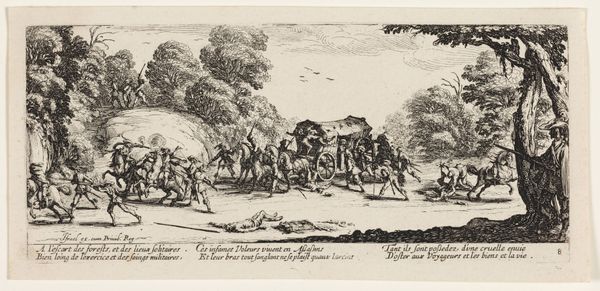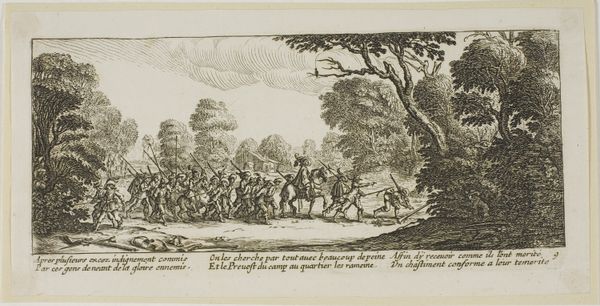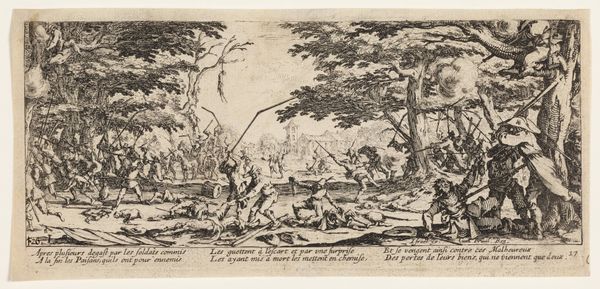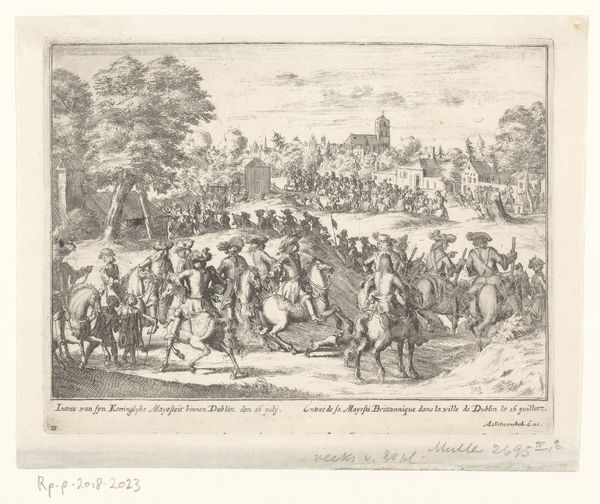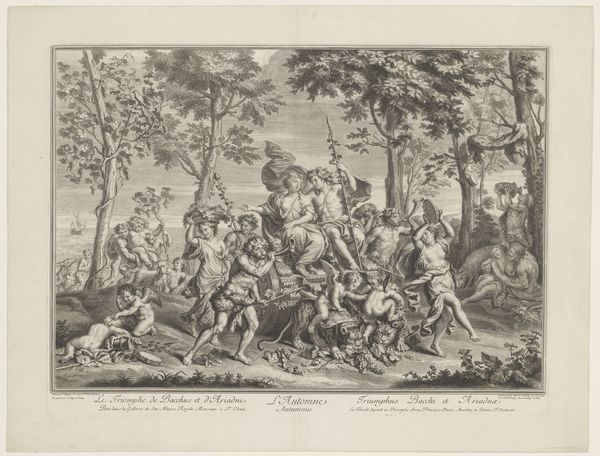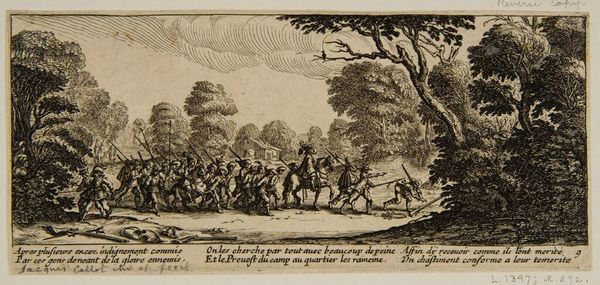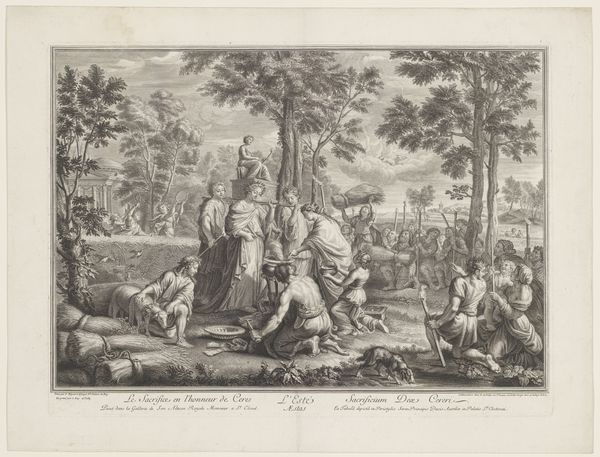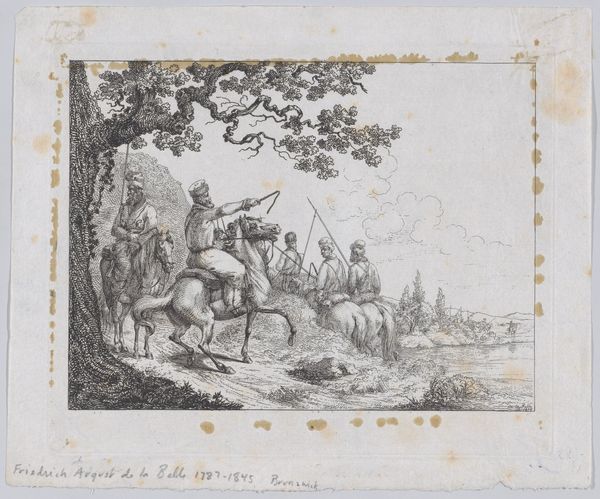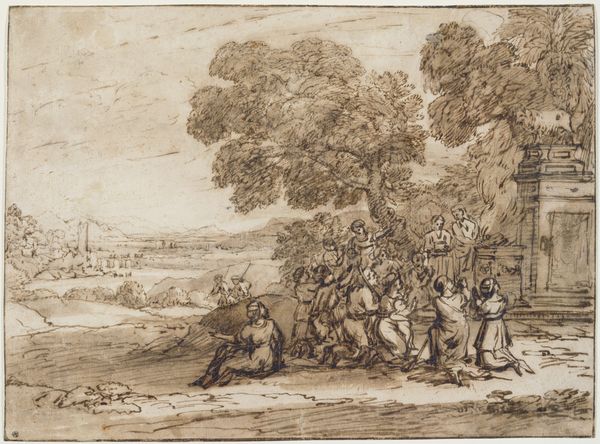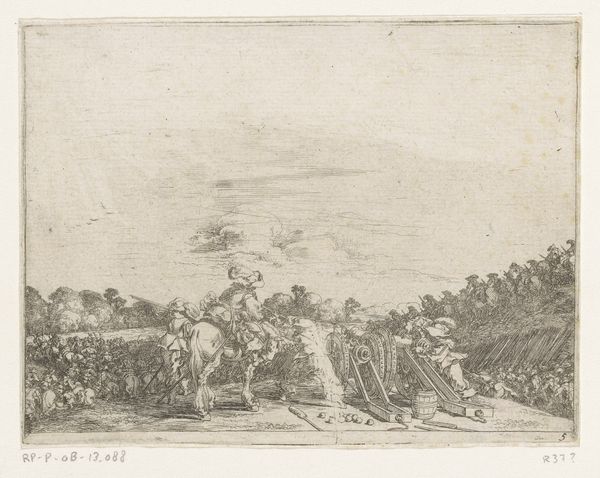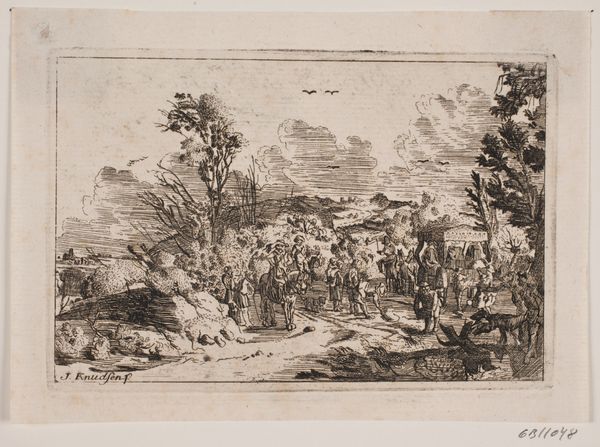
print, etching, engraving
#
baroque
# print
#
etching
#
landscape
#
history-painting
#
engraving
Dimensions: 83 mm (height) x 188 mm (width) (plademaal)
Curator: We’re looking at "Uregerlige soldater opspores" by Jacques Callot, dating back to 1633. It's an etching, engraving and print housed at the SMK, Statens Museum for Kunst. What's your first take? Editor: Chaotic. A flurry of soldiers swarming through a landscape that feels both open and claustrophobic. The line work is so delicate, yet it conveys such violence and disarray. Curator: Indeed. Callot was a master of capturing detail on a small scale. Consider the repetition of the soldiers with their lances and muskets; the way their poses echo each other, yet each figure retains individuality. Visually arresting, no? Editor: It's almost oppressive, this relentless pursuit. The forest is this churning mass, reflecting the men’s fervor. I'm wondering if these repetitive and agitated figures symbolize some internal disquiet. Curator: Fascinating interpretation! War is the backdrop. These kinds of prints offered insights into the impact of the Thirty Years' War and its toll. There’s even the contrast between the ordered group and those desperately running, potentially capturing distinct aspects of how conflicts unfold, whether external or within a soldier’s psychology. Editor: Yes! Look how that gnarled tree on the right mimics the soldiers' own postures of chase and violence, its limbs reaching as aggressively as their spears. It feels almost predatory. Curator: Callot had a talent for making even landscapes part of the narrative. Do you think the figures are a bit too grotesque and overemphasized? Editor: It feels like the exaggeration amplifies their frantic state and underscores the madness of conflict itself. But it also seems somewhat distanced. He frames that emotional state rather than getting caught in it, no? Curator: I agree. He achieves some emotional remove despite his incredibly detailed documentation. So, at first it seems a direct reflection of reality, but through its stylistic exaggerations, Callot asks us to pause and engage with conflict beyond surface observations. Editor: Yes! The chase and the fear; Callot renders the psychology of disruption—as if it were the most palpable and permanent casualty of war.
Comments
No comments
Be the first to comment and join the conversation on the ultimate creative platform.
